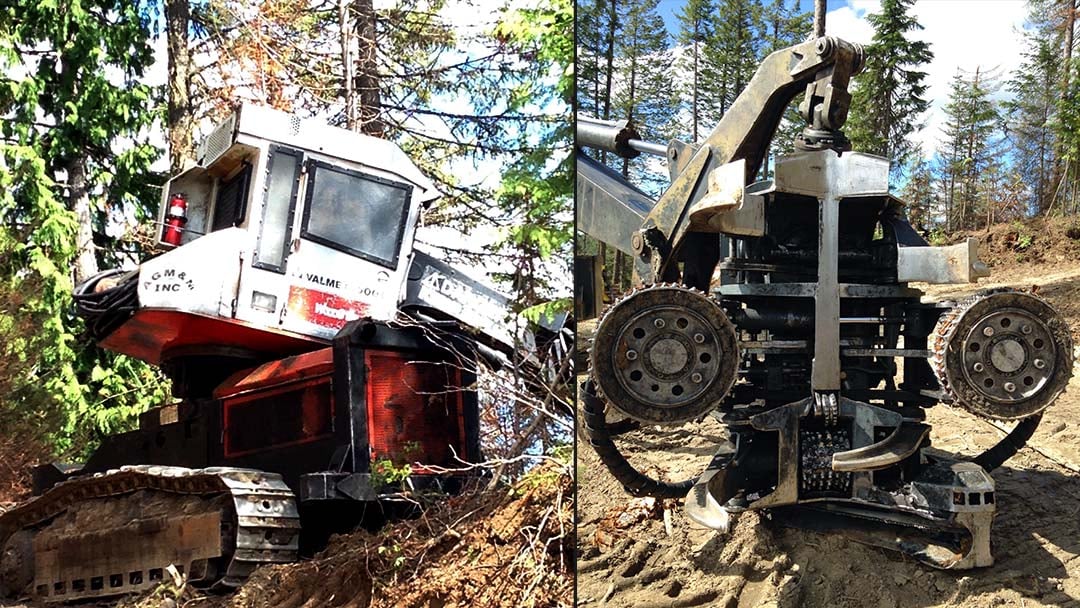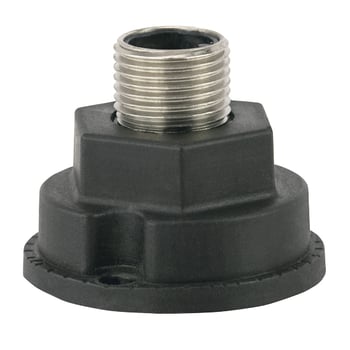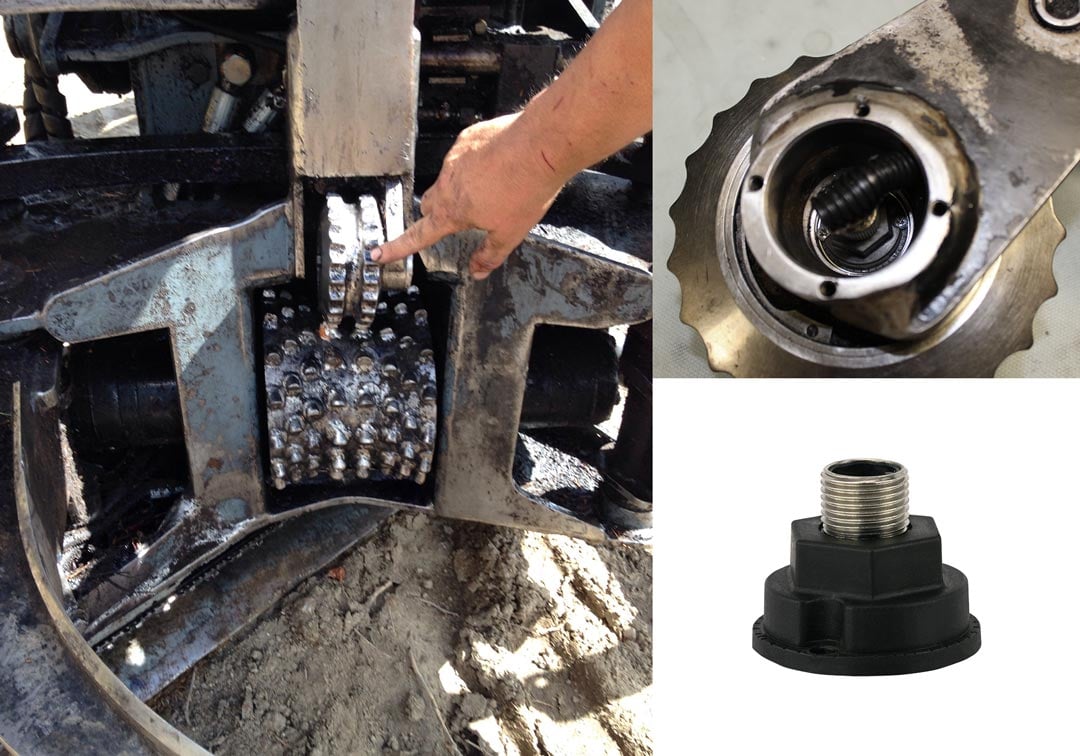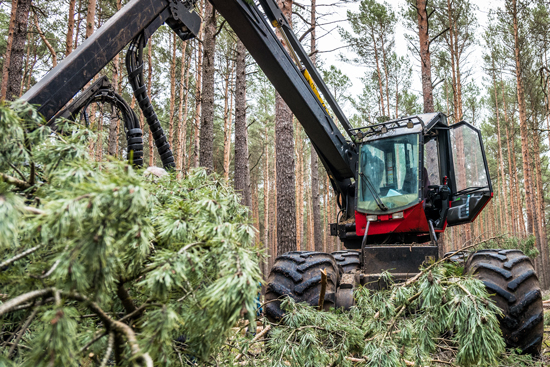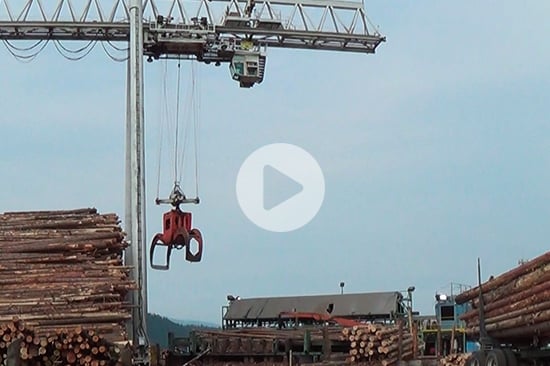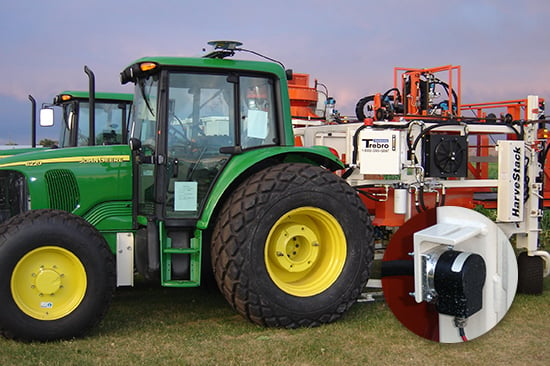The Problem
In this machine, the encoder is in the roller part of the processing arm, the log faller (photo below). That part rides along the log, and the encoder sends a digital pulse back to the controller, so the machine cuts the log at the correct length.
First and foremost, it’s a tight space. The encoder would have to be very compact – no more than an inch in diameter. And it had to be rugged; the encoder would have to survive temperature extremes and all the elements. What’s more, the encoder would have to endure a lot of movement and still provide reliable signals.
Finally, due to the need for bidirectional feedback, the encoder would need to offer quadrature. And it would need open collector output to match the controller’s requirements.
The Solution
After evaluating the machinery that Brad brought us, Engineering Technicians Joe Smith and Don Denison determined that the best solution was the Model 30M magnetic incremental encoder module.
“When we were developing this product, this is exactly the kind of application we had in mind,” says Joe. “I grew up logging, and worked in sawmills for more than thirty years before training as an Engineering Technician and coming to EPC, so I knew the need for a compact, rugged encoder was there.”
“It was pretty obvious that the Model 30M was the best solution,” explains Don, who also has experience with logging equipment. “This is a rugged application, and the encoder will be subjected to a lot of movement, a lot of bounce, which is part of why the magnetic encoder module made sense in this application: with its tolerance for a large air gap and magnetic sensing, it can handle the movement, and still provide flawless feedback.”
The Model 30M also offers the option of quadrature, and open collector output. Since logging equipment is exposed to the elements, Don recognized that the encoder would need strong protection. “The Model 30M’s standard temperature range is -40° to 120° C, so that wasn’t an issue. But the encoder needed a good seal, because it will be outside in the rain and weather. So we used the 8-pin, M12 connector, which gave us the IP69K seal,” Don explains.
Joe was able to evaluate the installation, and determined that the Press In/On Magnet Holder (which includes a magnet) with a 0.250” bore and a 0.125” shaft would be the perfect fit. “Installation was a piece of cake,” says Don.
A few days later, Brad reported back to us that the “encoder is working great” and they were back in full operation.
